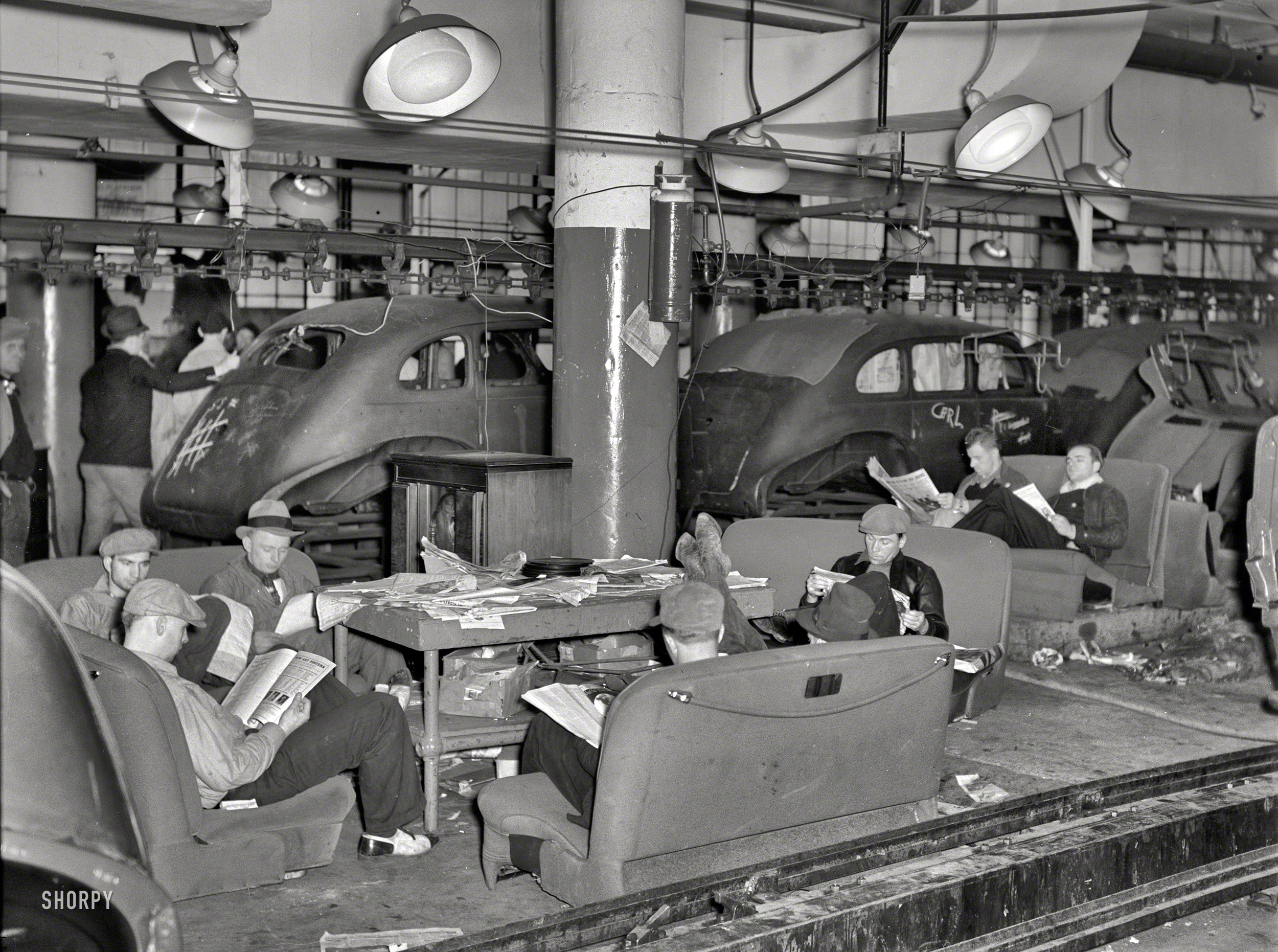The United Auto Workers union stages its first sitdown strike.

At 8 p.m. on December 30, 1936, in one of the first sit-down strikes in the United States, autoworkers occupy the General Motors Fisher Body Plant Number One in Flint, Michigan. The autoworkers were striking to win recognition of the United Auto Workers as the only bargaining agent for GM’s workers; they also wanted to make the company stop sending work to non-union plants and to establish a fair minimum wage scale, a grievance system and a set of procedures that would help protect assembly-line workers from injury. In all, the strike lasted 44 days.
The Flint sit-down strike was not spontaneous; UAW leaders, inspired by similar strikes across Europe, had been planning it for months. The strike actually began at smaller plants: Fisher Body in Atlanta on November 16, GM in Kansas City on December 16 and a Fisher stamping plant in Cleveland on December 28. The Flint plant was the biggest coup, however: it contained one of just two sets of body dies that GM used to stamp out almost every one of its 1937 cars. By seizing control of the Flint plant, autoworkers could shut down the company almost entirely.
So, on the evening of December 30, the Flint Plant’s night shift simply stopped working. They locked themselves in and sat down. “She’s ours!” one worker shouted.
GM argued that the strikers were trespassing and got a court order demanding their evacuation; still, the union men stayed put. GM turned off the heat in the buildings, but the strikers wrapped themselves in coats and blankets and hunkered down. On January 11, police tried to cut off the strikers’ food supply; in the resulting riot, known as the “Battle of the Running Bulls,” 16 workers and 11 policemen were injured and the UAW took over the adjacent Fisher Two plant. On February 1, the UAW won control of the enormous Chevrolet No. 4 engine factory. GM’s output went from a robust 50,000 cars in December to just 125 in February.
Despite GM’s enormous political clout, Michigan Governor Frank Murphy refused to use force to break the strike. Though the sit-ins were illegal, he believed, he also believed that authorizing the National Guard to break the strike would be an enormous mistake. “If I send those soldiers right in on the men,” he said, “there’d be no telling how many would be killed.” As a result, he declared, “The state authorities will not take sides. They are here only to protect the public peace.”
Meanwhile, President Roosevelt urged GM to recognize the union so that the plants could reopen. In mid-February, the automaker signed an agreement with the UAW. Among other things, the workers were given a 5 percent raise and permission to speak in the lunchroom.



